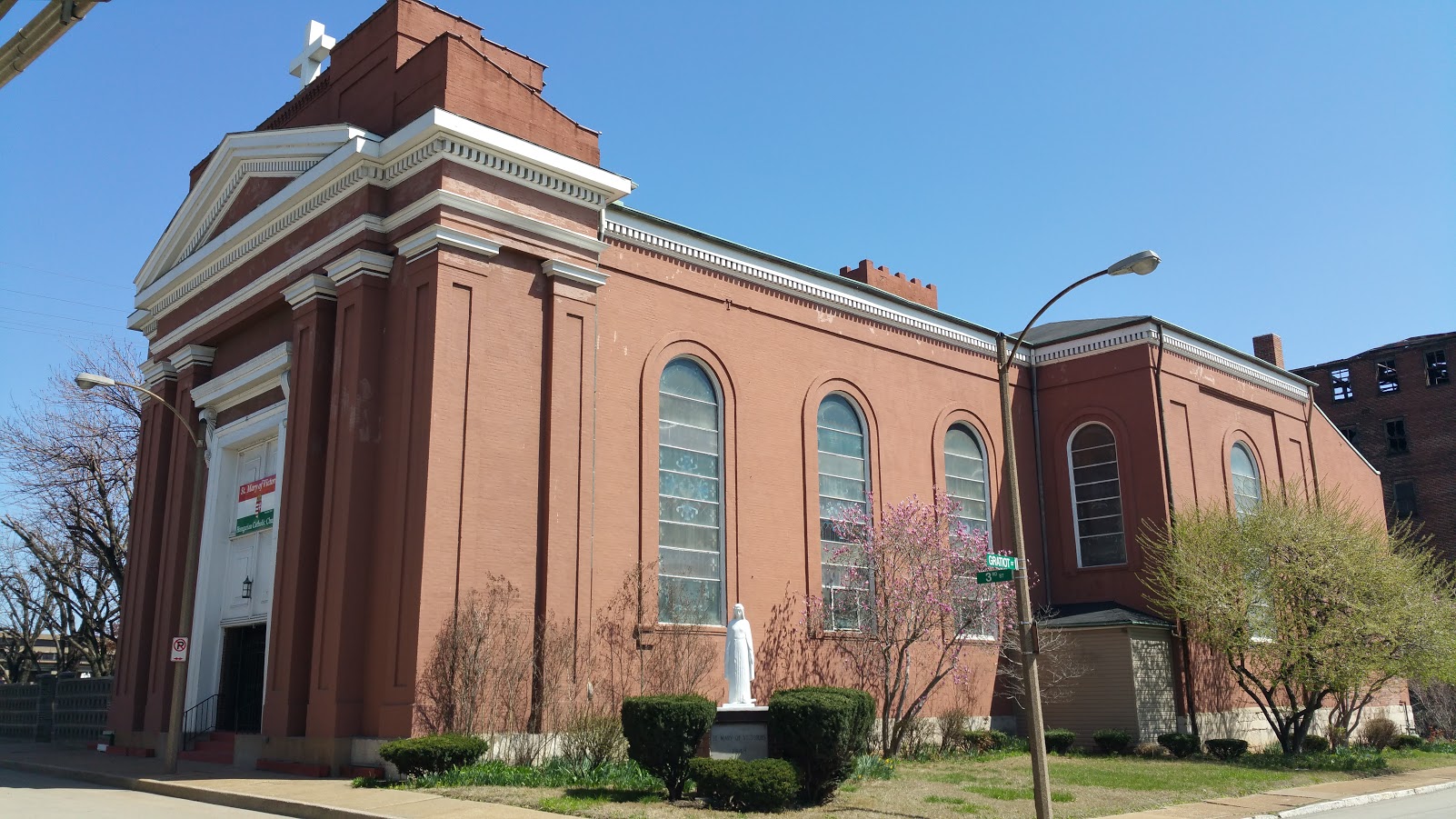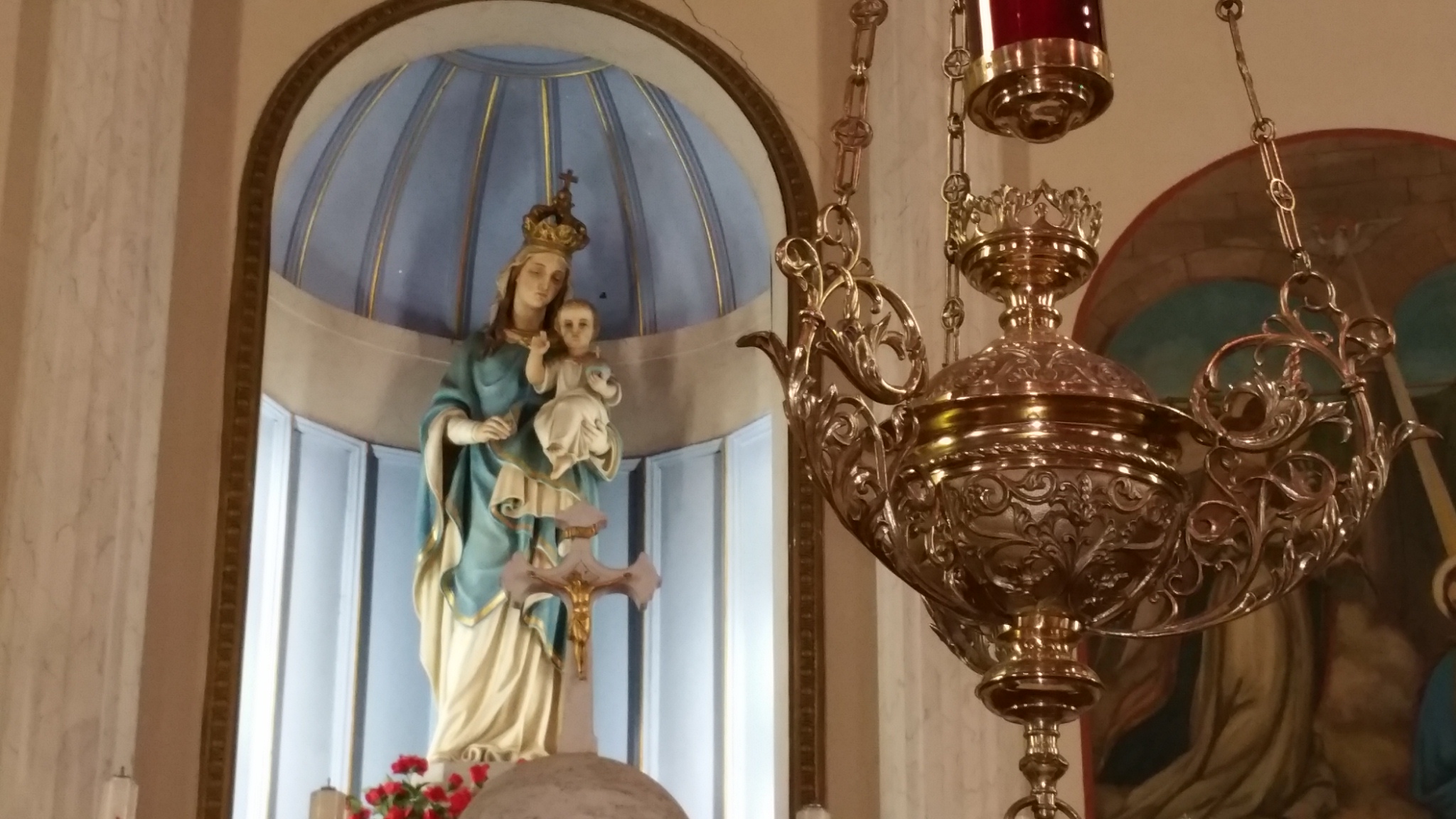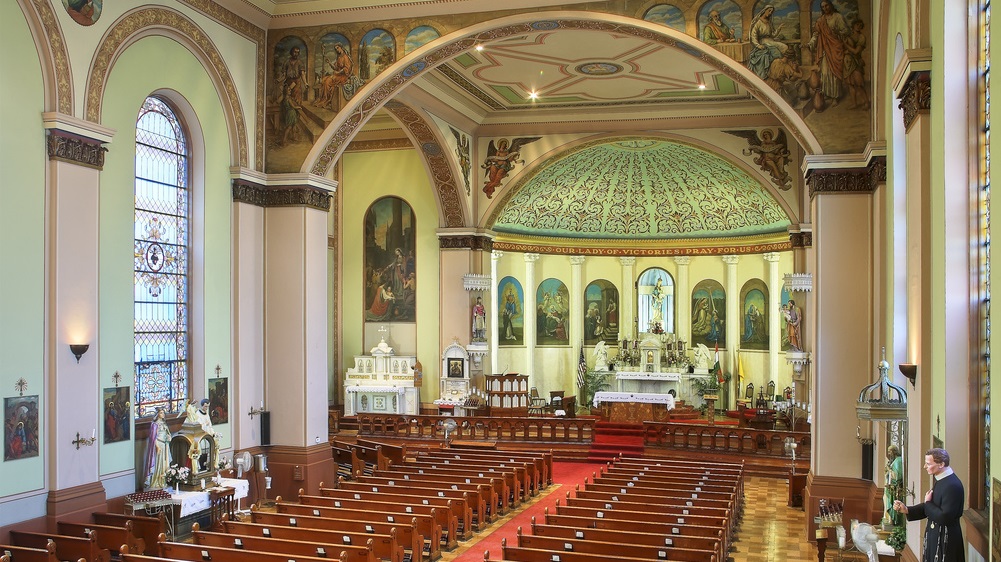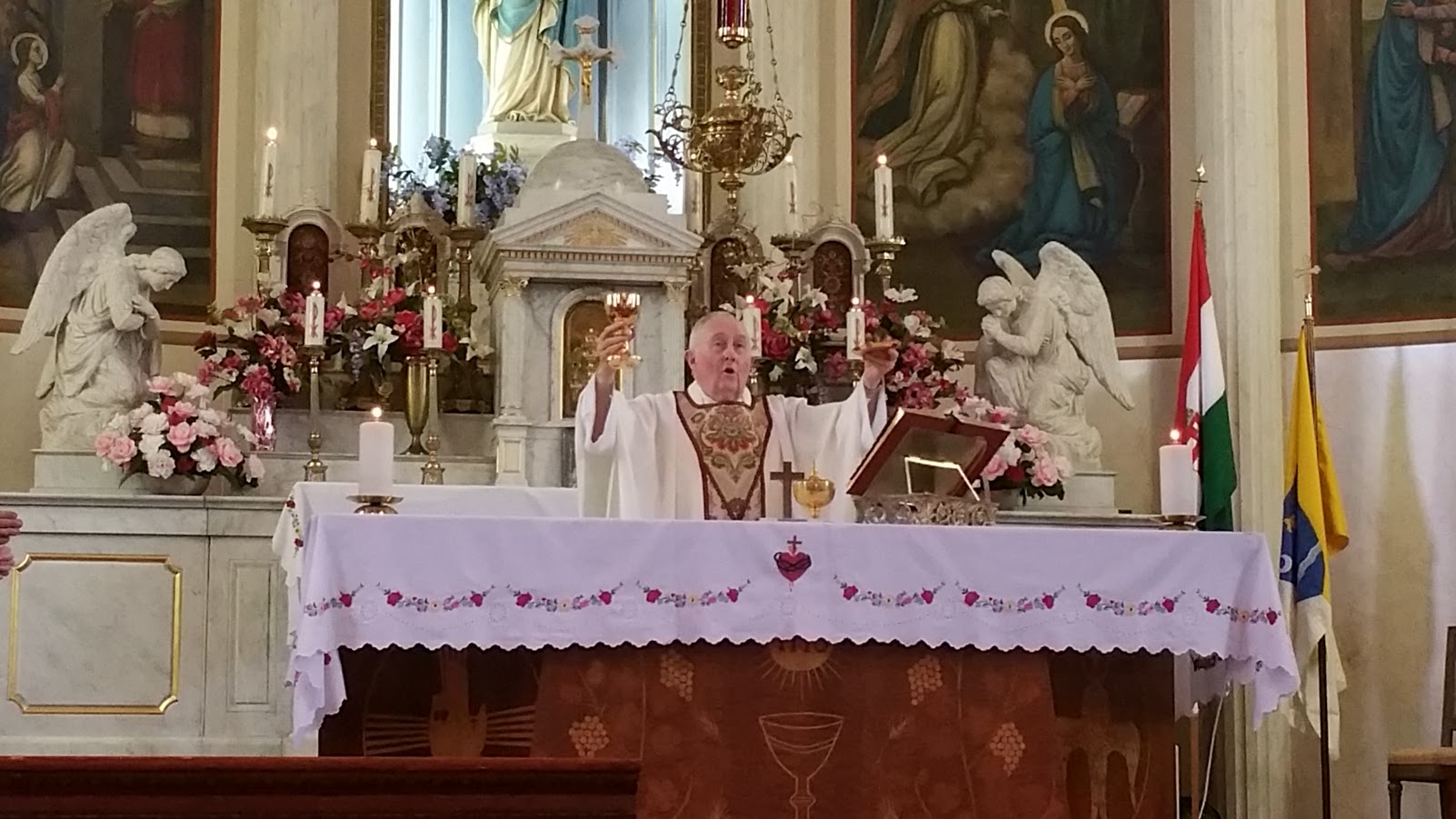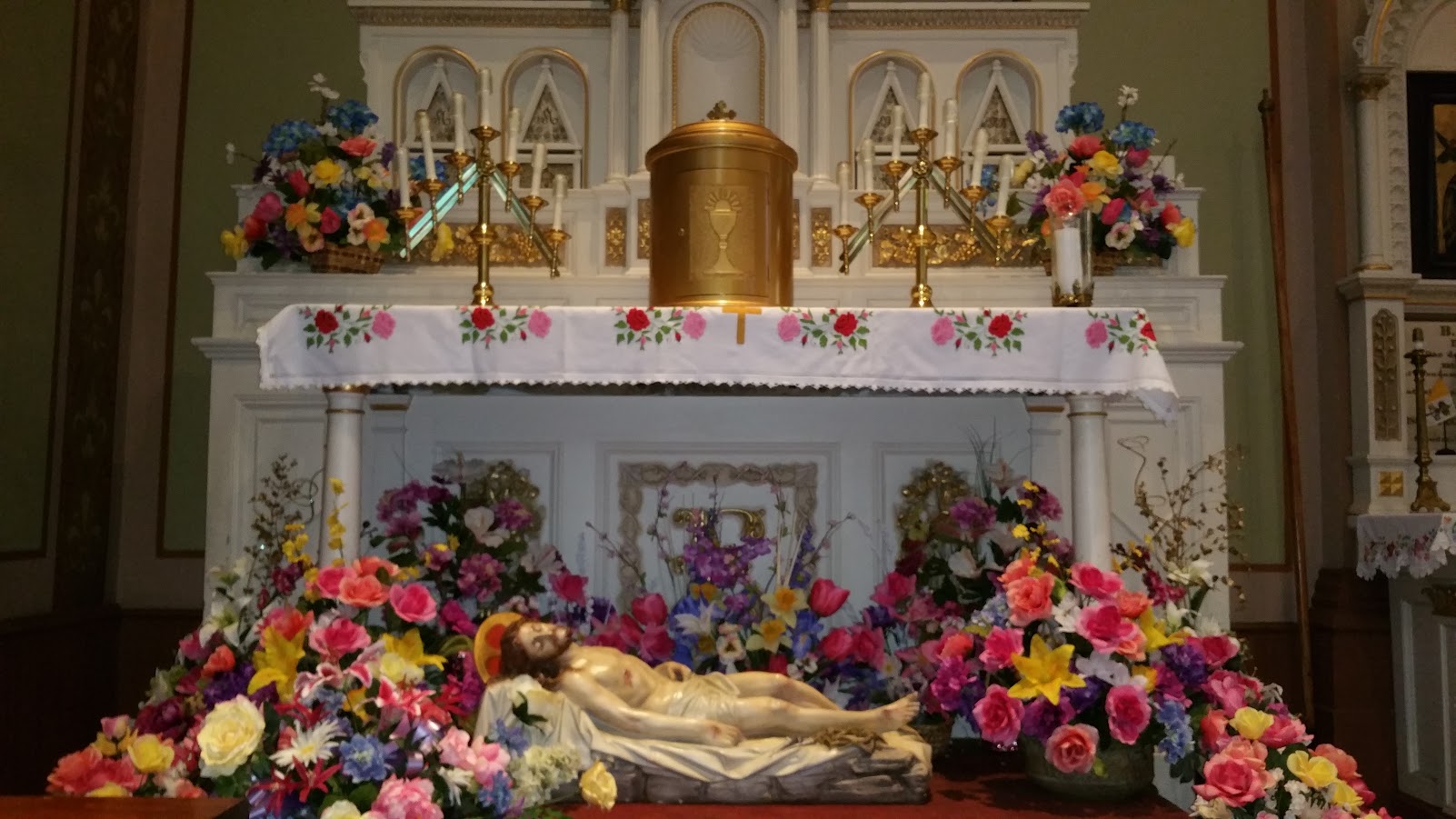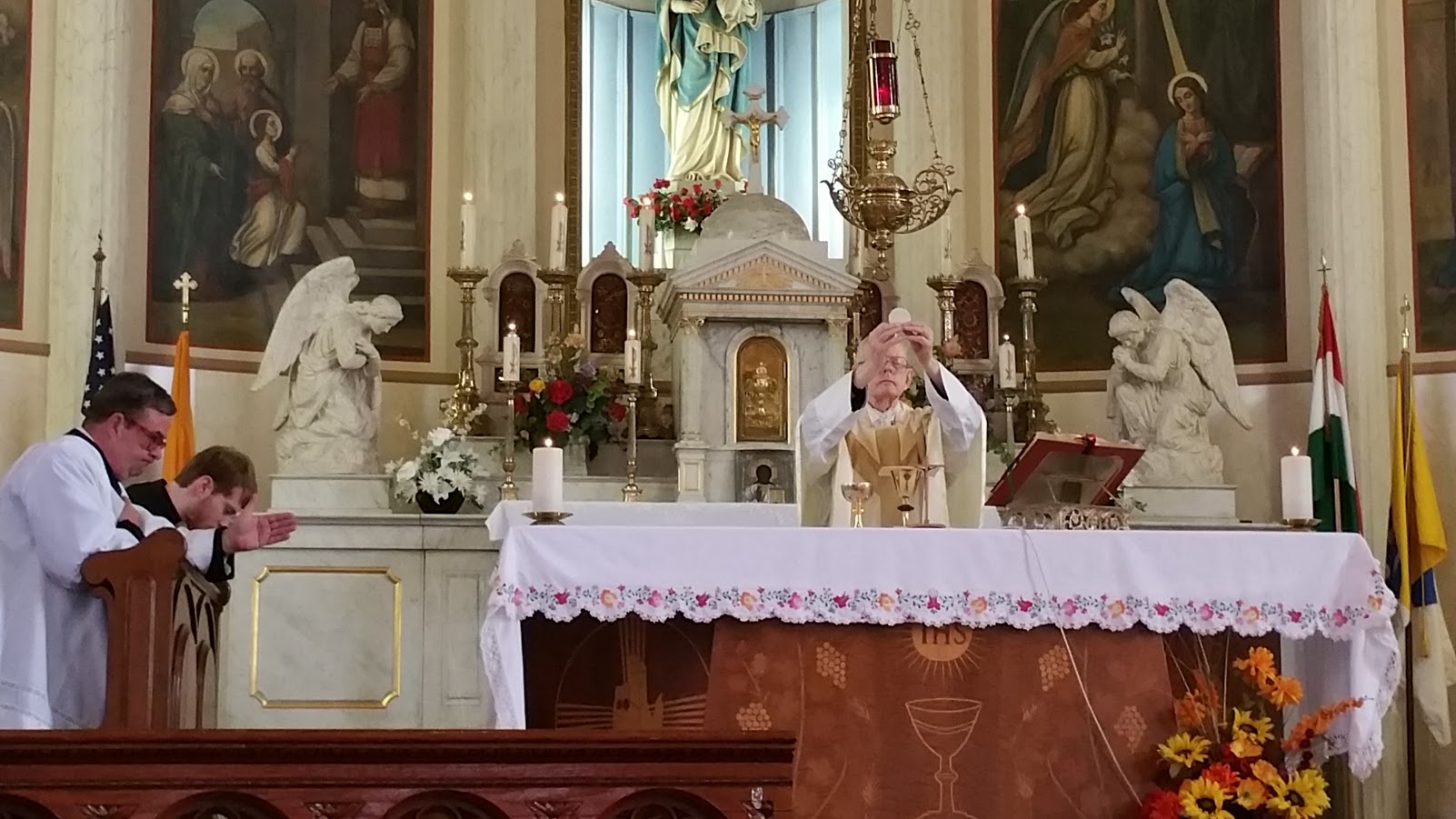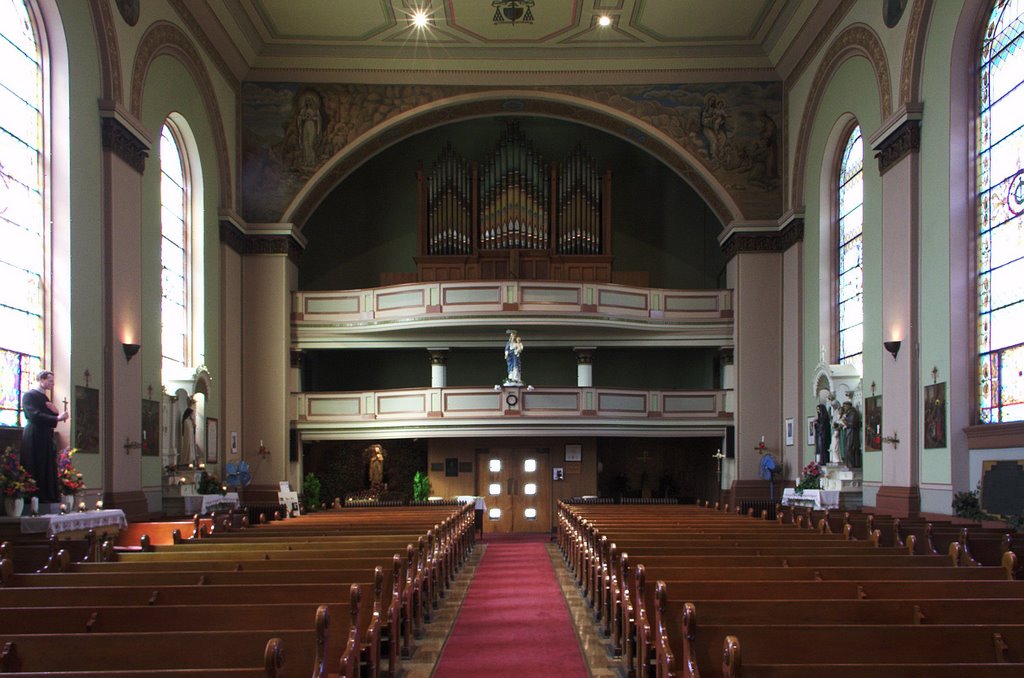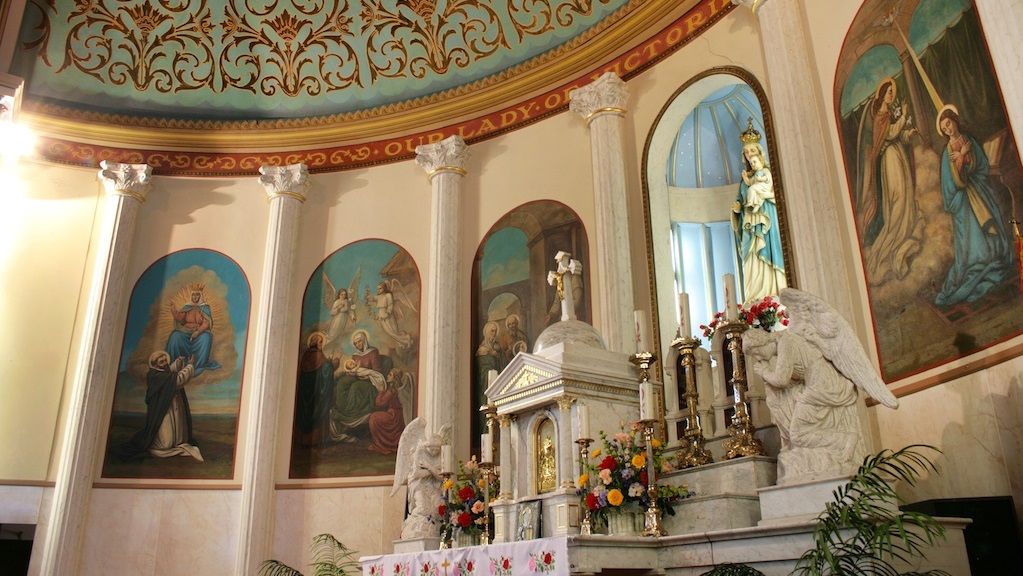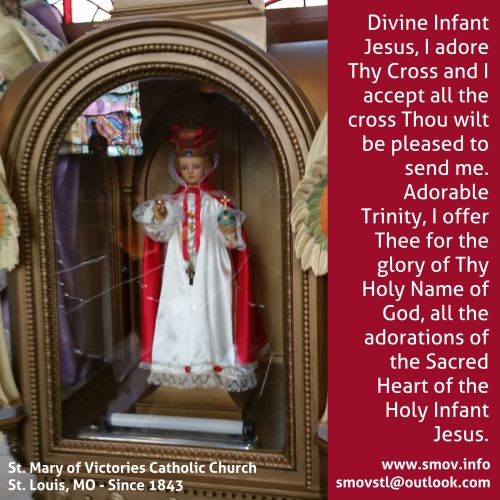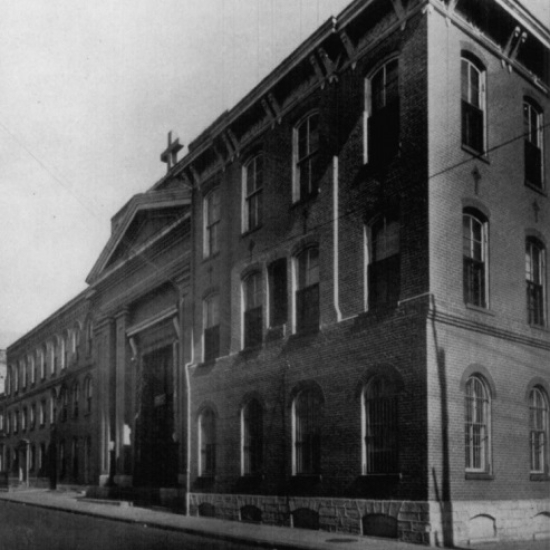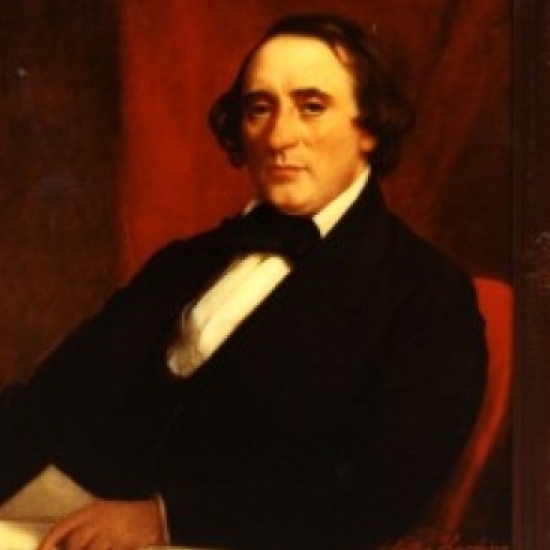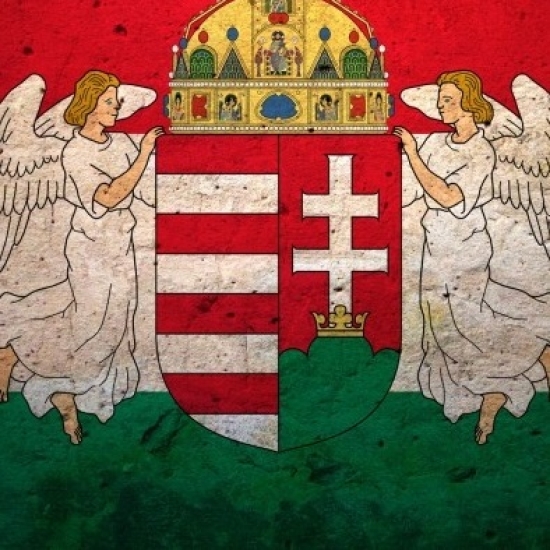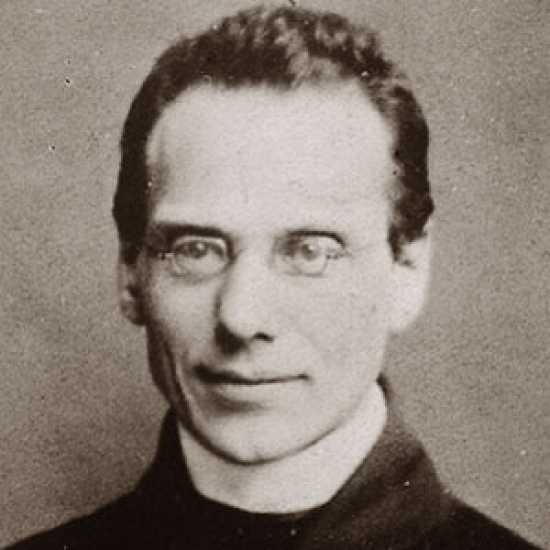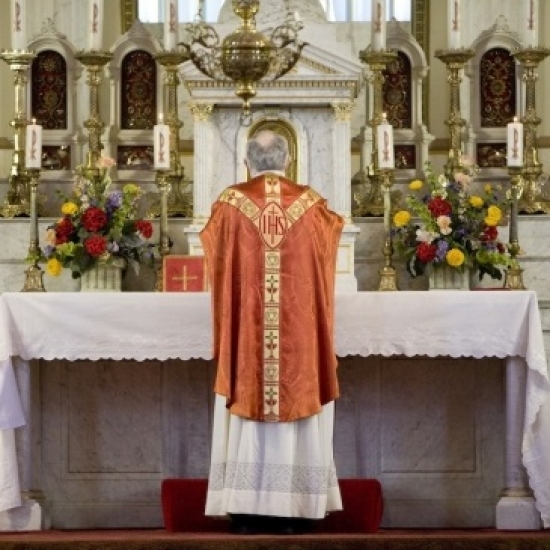Offertory: Concordi laetitia, V2H, p. 370.
Communion (Year B): Ego vos elegi
May Crowning (see Order & prayers below):
Hail, Holy Queen Enthroned Above, V2H, p. 261
Bring flowers of the fairest
Recessional: Regina Caeli, PBC, p. 121
Dismissal from Mass I, as in Paschaltide apart from the Octave and Pentecost, PBC, p. 48.
Mass I (Lux et origo) PBC, p. 46ff. Credo III, PBC, p. 77ff.
The Introit antiphon has three phrases:
1. Vocem jucunditatis annuniate, et audiatur, alleluia
2. nuntiate usque ad extremum terrae
3. liberavit Dominus populum suum, alleluia, alleluia.
One might—reasonably—expect Easter joy to gradually diminish in the successive Sundays after Easter, for the more we recede from the feast day, the closer we approach the day of the Lord's ascension and departure from earth. But it does not. The melodies for the Introits of the first, second, and fourth Sundays are devout, rather than jubilant. Into these the brilliant third Sunday is inserted. Now, rising above all these, comes the Introit of the sixth Sunday: a clarion call of real Easter joy which would resound to the uttermost ends of the earth.
In its first half, the first phrase has an energetic ascent for its arsis, followed by a similarly proportioned thesis. The melodic line here is delicate, avoiding everything rough or severe. By preference the new neume sets in on the last note of the preceding one (dge-eg-ga-acb, and the descending ca-ag-gag). After a brief arsis the second half brings a drawn-out thesis with the tetrachord d-g, gaining strength for a renewed and powerful ascent. The second phrase begins with the same motif as the first, but increases greatly in force with the fourth over usque. The effect is heightened still more by the two identical clives. And now comes a loud cry of joy with the torculus. It is not only tone-painting, but should manifest a long-pent-up, surging joy in the heart of the singer. The third phrase brings the message itself. One might expect a still greater enhancement of the melody here. But a further development upward is hardly possible, for the third mode, the one selected for this piece, very rarely reaches above the high e used over extremum. And a repetition of that note might sound weak. Moreover, a royal message is announced with a fanfare followed by the solemn and quiet proclamation of the message. So
we sing these words with deep emotion and heartfelt thanksgiving, then with the twofold alleluia joy breaks forth anew. Over suum it has already reverted to the motif of the first phrase over audiatur; this it varies pleasantly toward the end and culminates in the florid neums over the final alleluia. This melody was adopted for the Introit of the feast of the Immaculate Conception; and also, though less happily, for the feast of St. Anthony Mary Zaccaria (July 5).
(Year B) The Communion antiphon is in the former Graduale in a number of feasts, including SS. Primus and Felicianus, Martyrs (9 June) and Seven Holy Founders (12 February). It was also sung on the feast of St. Luke and in the Common of Apostles in several manuscripts. It has three phrases:
1. Ego vos elegi de mundo ut eatis et fructum afferatis
2. et fructus vester maneat
3. Alleluia
This Mode I antiphon again tracks the sense of the text as the melody ascends over Ego vos, then descends over de mundo, rises again slightly over eatis, then more over fructus, as if to depict the disciples lifted up by our Lord to a higher plane as their efforts bear fruit. The termination over maneat is a firm and settled one, as befits the word. The Saint-Gall manuscript is replete with rhythmic and expressive detail for such a brief chant. We'll spend some time with those details during our practice on Tuesday 1 May.
Order for the May Crowning (Done at the end of Mass on the first Sunday of May)
All sing the first verse of Hail, Holy Queen Enthroned Above, V2H, p. 261, as the ministers leave the altar and process to Our Lady's statue. After that, the celebrant will say:
Celebrant: As we begin the month of May this year while celebrating the glorious Season of Easter, we wish to add to our joy in praising the Risen Christ by carrying out a special act in honor of his Holy Mother, crowning this image of Saint Mary of Victories, Patroness of our church. This image reminds us of the close ties of Mary to Christ and his Church. First of all, she is Christ’s Mother, the Mother of the visible image of the invisible god. But she is also the image and the model of the Church, and she is its exemplar. In Mary the Church joyously contemplates the image of all that the Church itself desire and hopes wholly to be. The Church recognizes in Mary the model of the path and the practice it must follow to reach complete union with Christ. As the Spouse of Christ, the Church raises its eyes to Mary, the exemplar it must look to in carrying out the work of the apostolate. We should strive to take part in this service with the greatest intensity and reverent devotion.
The statue is crowned while all sing the crowning hymn, Bring flowers of the fairest.
Celebrant: Almighty God and Father, you have given us the mother of your Son to be our queen and mother. With the support of her prayers, may we come to share the glory of your children in the kingdom of heaven. We ask this through our Lord Jesus Christ, your Son, who lives and reigns with you and the Holy Spirit, one God, for ever and ever.
All: Amen.
As a recessional hymn, all sing the Regina Caeli as indicated above, with its conclusion led by the celebrant:
V. Gaude et laetare Virgo Maria, alleluia.
R. Quia surrexit Dominus vere, alleluia.
Oremus. Deus, qui per resurrectionem Filii tui, Domini nostri Iesu Christi, mundum laetificare dignatus es: †: praesta, quaesumus, ut per eius Genetricem Virginem Mariam*, perpetuae capiamus gaudia vitae. Per eundem Christum Dominum nostrum. R. Amen.
